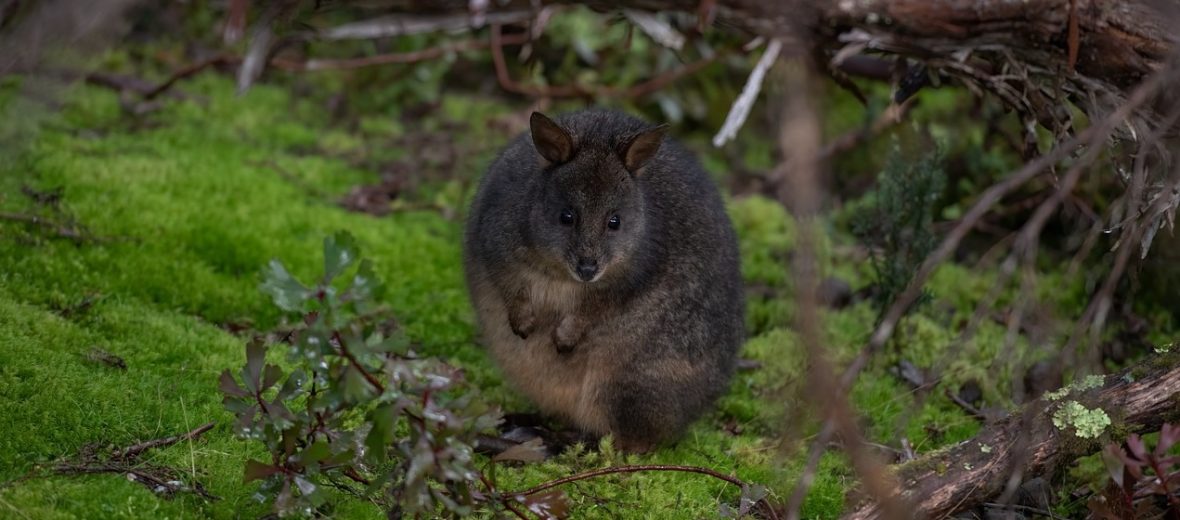
The Tasmanian pademelon, aka red-bellied pademelon or rufous-bellied pademelon, (pronounced pa·duh·meh·luhn) is a short and stout marsupial that hails from Tasmania. The Tasmanian species used to also be found in southern Australia. They are now only found on Tasmania. There are 7 known species of pademelons, found in Australia and its surrounding islands. Even though they face the threat of invasive species, and with them disease, they are abundant throughout Tasmania and are therefore listed as Least Concern by the IUCN. Their population is listed as stable.
First the Stats…
Scientific name: Thylogale billardierii
Weight: Up to 11 lbs.
Length: Up to 47 inches, plus up to an 18 inch tail
Lifespan: Up to 6 years
Now on to the Facts!
1.) Pademelons are nocturnal (active at night).
2.) They are solitary creatures that only come together to breed.
3.) Being reclusive and shy, these critters seldom venture beyond 300+ feet from the forest edges.
4.) If food is abundant, there can be as many as 10 pademelons gathered into a small group.
5.) When threatened, their first response is to flee.
But wait, there’s more on the Tasmanian pademelon!
6.) Being herbivores (eat plant matter), these creatures graze on herbs, grasses, green shoots, and a variety of other plants.
7.) Tasmanian pademelons are polygynandrous (promiscuous – males and females have multiple partners).
Did you know…?
Besides thumping their hind feet on the ground, they also have a few vocalizations. Males make a harsh, rasping sound if a female rejects him, and they make a soft clucking sound during sensual success.
8.) Females birth a single joey, after up to a 30 day gestation (pregnancy).
9.) The joey makes its way, immediately, into mom’s marsupium (pouch) and stays there for up to 6 months.
10.) The joey is weened at about 8 months of age and is sexually mature at just over a year old.
11.) Predators of these critters are foxes, dingos, large birds of prey, and domestic & feral dogs.
Now a Short Tasmanian Pademelon Video!
Be sure to share & comment below! Also, check out the Critter Science YouTube channel. Videos added regularly!
Want to suggest a critter for me to write about? Let me know here.
Think you know a lot about critters? Try your hand at these fun, free quizzes:



